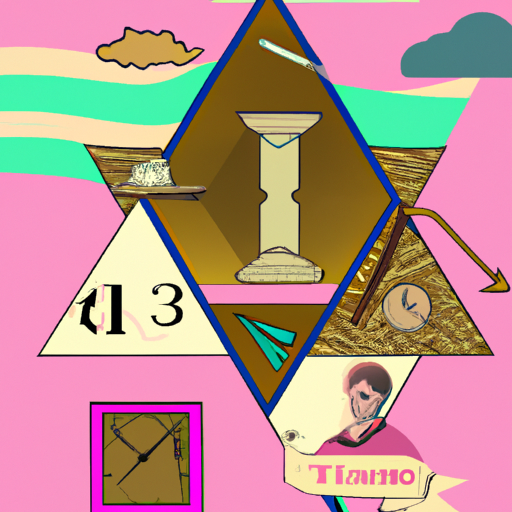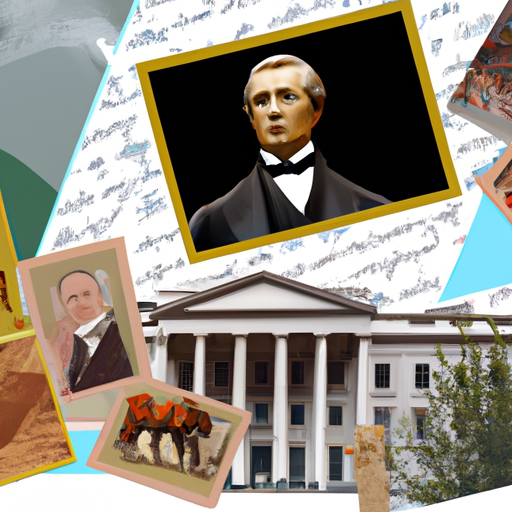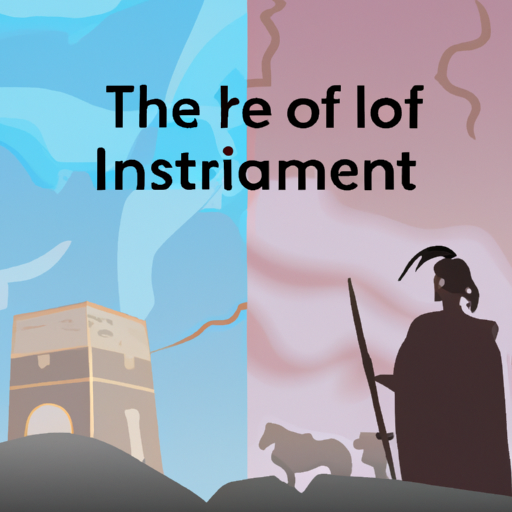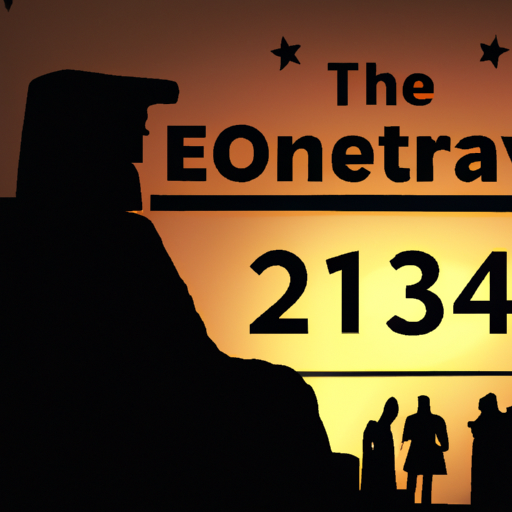History of Muslim Rule in India: How Long Were the Muslims in India?
Unearth the untold tale of Muslim presence in India – from epochs of dominion to today’s assimilation. Delve into a time-honored narrative that has been woven into the fabric of the country, one that has left an indelible mark on its culture and society. Explore a story that is both ancient and modern, one that speaks to an ever-evolving relationship between two distinct yet intertwined cultures. Uncover a past that defies easy categorization, one filled with moments of triumph and tragedy, joy and sorrow. Unearth the untold history of Muslim presence in India.

For centuries, the Muslim presence in India has been a weaving tapestry of culture and society, its threads stretching back to a time when Delhi was established as the capital of the Delhi Sultanate. The Mughal Empire left an indelible mark on India’s history, with art, architecture, literature and language that still echoes today. As the centuries passed and power shifted away from direct political control, many Muslims found success as merchants or traders throughout the country.
In recent years, Muslims have become increasingly assimilated into Indian life. While some have faced prejudice due to their faith or ethnicity, others have embraced acceptance and flourished within Indian culture. Today, they are an integral part of India’s diverse population and contribute to its unique cultural landscape.
The narrative of Muslim presence in India is one that cannot be easily categorized; it is filled with both joy and sorrow yet speaks to a shared past between two cultures. It is a story that must be told – one that reflects the ever-changing relationship between two distinct yet intertwined worlds.
.
Introduction
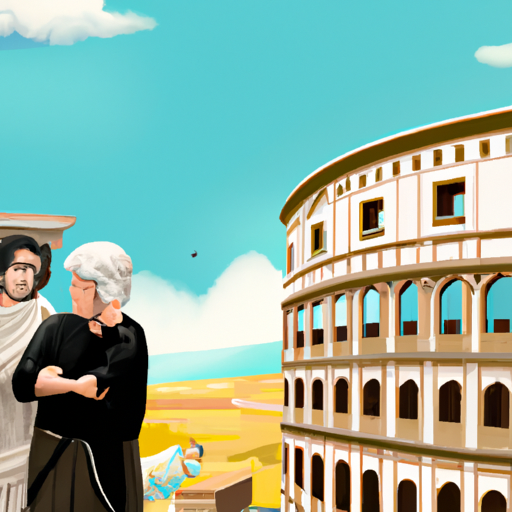
Mysteriousness and surprise pervade the narrative of Muslim presence in India, a story which began in the 8th century CE when Arab traders and travelers first made their way to the region. This was followed by centuries of rule by Muslim dynasties, resulting in a period of Muslim sovereignty that endured up until the dawn of India’s independence in 1947. During this time, Muslims left an indelible mark on Indian culture and society, constructing such cities as Delhi and Hyderabad as well as leaving behind such monuments as the Taj Mahal. Even after freedom was gained, many Muslims stayed put while others moved to Pakistan or Bangladesh. Currently, they make up roughly 14% of India’s population.
– History of Muslim Invasions and Occupations in India
Ascending from the 8th century, Muslim powers surged across the Indus River in a bid to expand their domains and propagate their faith. This led to the foundation of the Delhi Sultanate in 1206, under Qutb-ud-din Aibak, heralding nearly 500 years of Muslim reign. In this epoch, numerous Hindu temples were demolished and substituted with mosques, while non-Muslims had to pay taxes. Babur then inaugurated the Mughal Empire in 1526, an era of prosperity and cultural grandeur. His successors extended Mughal authority until it attained its summit under Aurangzeb in 1658. Nevertheless, by 1857 British forces had seized much of India and brought an end to Muslim rule forevermore. Despite this long period of occupation, Muslims still remain a crucial part of Indian society today.
– Historical Impact of Muslim Rule on Indian Society
A complex and multi-faceted legacy, the influence of Muslim rule in India is still felt to this day. Starting in the 8th century CE, Islamic culture and traditions began to take root and shape the nation’s landscape. The Mughal Empire, renowned for its art and architecture, was one of the most powerful empires in world history; its crown jewel being the Taj Mahal which Emperor Shah Jahan built as a memorial to his beloved wife Mumtaz Mahal in 1632. The Delhi Sultanate was another significant dynasty during this period, introducing Islamic law to India and establishing an efficient taxation system.
This era also saw Hinduism experience a resurgence as many Hindus adopted aspects of Sufism; a mystical form of Islam that emphasizes spiritual connection with Allah through meditation and music. Additionally, several new syncretic religions emerged such as Sikhism which blended elements from both Hinduism and Islam. Urdu language was introduced during this time as well; derived from Persian but heavily influenced by local languages like Hindi so that it could be understood across India today. Urdu poetry has become particularly popular among Indians who often use it to express their emotions or beliefs about life experiences.
These are just some of the ways in which Muslim rule has left an indelible mark on Indian society – one that will continue to be felt for centuries to come.
– The Decline of Muslim Rule in India
A tumultuous saga of power-shifts and invasions, the Muslim rulers of India left a lasting imprint on its society from the establishment of the Delhi Sultanate in 1206 to the fall of the Mughal Empire in 1857. Yet by mid-19th century, their dominion had begun to wane.
This waning was due to a multitude of reasons – internal divisions among Muslims, escalating European meddling in Indian politics, and Hindu reformers such as Ram Mohan Roy who called for an end to Muslim rule and championed for more democratic reforms, thus spurring Hindu nationalism. Other external factors that weighed in included economic changes like skyrocketing prices and famine; military defeats at the hands of Euro powers; and social unrest stemming from religious tensions between Hindus and Muslims. All these combined resulted in a situation where Muslim rulers could no longer retain their power over India.
The decline of Muslim rule in India brought about a seismic shift in its history, paving way for British colonization and eventual independence from colonial rule. To this day, its legacy can still be observed throughout Indian culture with many aspects continuing to reflect its influence.
– Legacy of the Mughal Dynasty in India
Enigmatic and momentous, the Mughal Dynasty left an indelible mark on India’s past. Founded in 1526 by Babur, their rule was a kaleidoscope of Persian and Central Asian culture that shaped the subcontinent for centuries to come. The iconic Taj Mahal and the Red Fort in Delhi are just two of the architectural marvels built during this era, while their influence on Indian cuisine is still felt today. Furthermore, they were great patrons of learning and literature, inspiring works such as the Baburnama and Akbarnama. Even now, their legacy remains visible in modern India – from art to religion – all passed down through generations.
– The Influence of Islamic Art and Culture on Indian History
Awe-inspiring and remarkable, the integration of Islamic and Indian culture has left an indelible mark on the history of India. Since the 8th century, Islamic rulers have brought with them a unique style of artistry and architecture that was adapted by Indian culture. This is evident in the numerous monuments and sites scattered across India today.
The Taj Mahal stands as a prime example of this cultural fusion; constructed by Mughal emperor Shah Jahan in remembrance of his beloved wife Mumtaz Mahal, it is an architectural masterwork combining elements from both Islamic and Indian design. Its white marble façade is adorned with intricate carvings reminiscent of Islamic calligraphy while its interior features Hindu-style arches and domes.
Beyond architecture, Islamic art has also been influential in other aspects such as music, literature, painting, and even language. Persian became the official language during Mughal rule and many words from this language were incorporated into Hindi over time. Additionally, Persian poetry impacted Urdu literature in India and modern Urdu poetry still bears the traces of these influences.
Additionally, there are a number of customs believed to have been introduced to India by Muslim invaders from Central Asia such as biryani dishes or festivals like Eid which are celebrated widely today. All these examples demonstrate how deeply rooted Islamic art and culture is in Indian history. The grandeur of the Taj Mahal to everyday customs like celebrating Eid remain testament to the dynamic cultural exchange between two great civilizations.
conclusion

For centuries, Muslims had been a presence in India, their influence and power growing over time. From Arab traders arriving in the 8th century CE to the mighty Delhi Sultanate and Mughal Empire, they left an indelible mark on the subcontinent. But it was not to last; 1857 saw the British Raj take control of India, and with it, the end of Muslim rule. A thousand years of history came to a close.
.
Some questions with answers
Q1. How long were the Muslims in India?
A1. The Muslim presence in India dates back to the 8th century when Arab traders and travelers arrived in the country.
Q2. When did Muslim rule begin in India?
A2. The first major Muslim dynasty to establish rule in India was the Delhi Sultanate, which began in 1206 and lasted until 1526.
Q3. Who was the founder of the Mughal Empire?
A3. The Mughal Empire was founded by Babur, a descendant of Genghis Khan and Timur, in 1526.
Q4. How long did the Mughal Empire last?
A4. The Mughal Empire ruled much of North India from 1526 until 1857 when it was defeated by British forces during the Indian Rebellion of 1857-1858.
Q5. What is the legacy of Muslim rule in India?
A5. Muslim rule has left a lasting impact on Indian culture, architecture, language and cuisine that can still be seen today.
